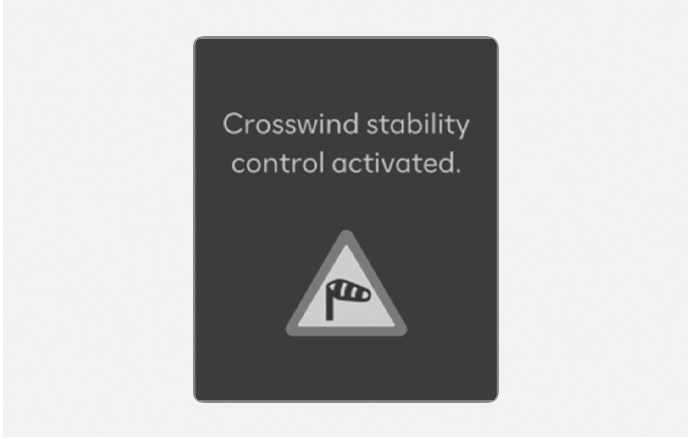Crosswind Stability Control (CSC)
Crosswind Stability Control (CSC) works with Electronic Stability Control (ESC) and Motor Driven Power Steering (MDPS) to stabilize the vehicle when it is being shaken or pushed outward due to strong crosswind.

2C_CSCInfo
-
When driving over a bridge or next to a large truck or bus, strong crosswinds may cause the vehicle to shake or pushed outward. The CSC automatically adjusts the vehicle posture and steering wheel to correct the course of the vehicle.
-
When activated, the ESC (
a ) indicator light illuminates and warning message appears on the Cluster display with a warning sound. -
When activated, the driver may feel a slight vibration of the vehicle and awkwardness of the steering wheel, due to the braking and MDPS.
Crosswind Stability Control may not operate, or may cancel its operation in the following conditions:
-
Vehicle speed is about below 45 mph (70 km/h) or about above 112 mph (180 km/h).
-
When the driver makes a sharp turn.
-
When the brake pedal is depressed past a certain level.
-
Driving on a bumpy road, ice, snow, or slippery surface such due to ice, snow, or rain.
-
When ESC OFF (
b ) indicator illuminates by turning off the ESC (ESC OFF state 2). -
ESC is activated.
-
Driving assistance system (FCA, BCA, LKA, LFA, etc.) are activated.
-
When ESC has problems, CSC does not operate.
-
When MDPS has problems, CSC may partially operate.
-
If the ESC (
a ) or MDPS (E ) warning light stays illuminated or blinks, have the vehicle inspected by an authorized HYUNDAI dealer.
Crosswind Stability Control is only a supplementary system to assist the driver. The driver should be responsible for the control of the vehicle.
Always hold the steering wheel while driving and depress the brake pedal to reduce speed if necessary.